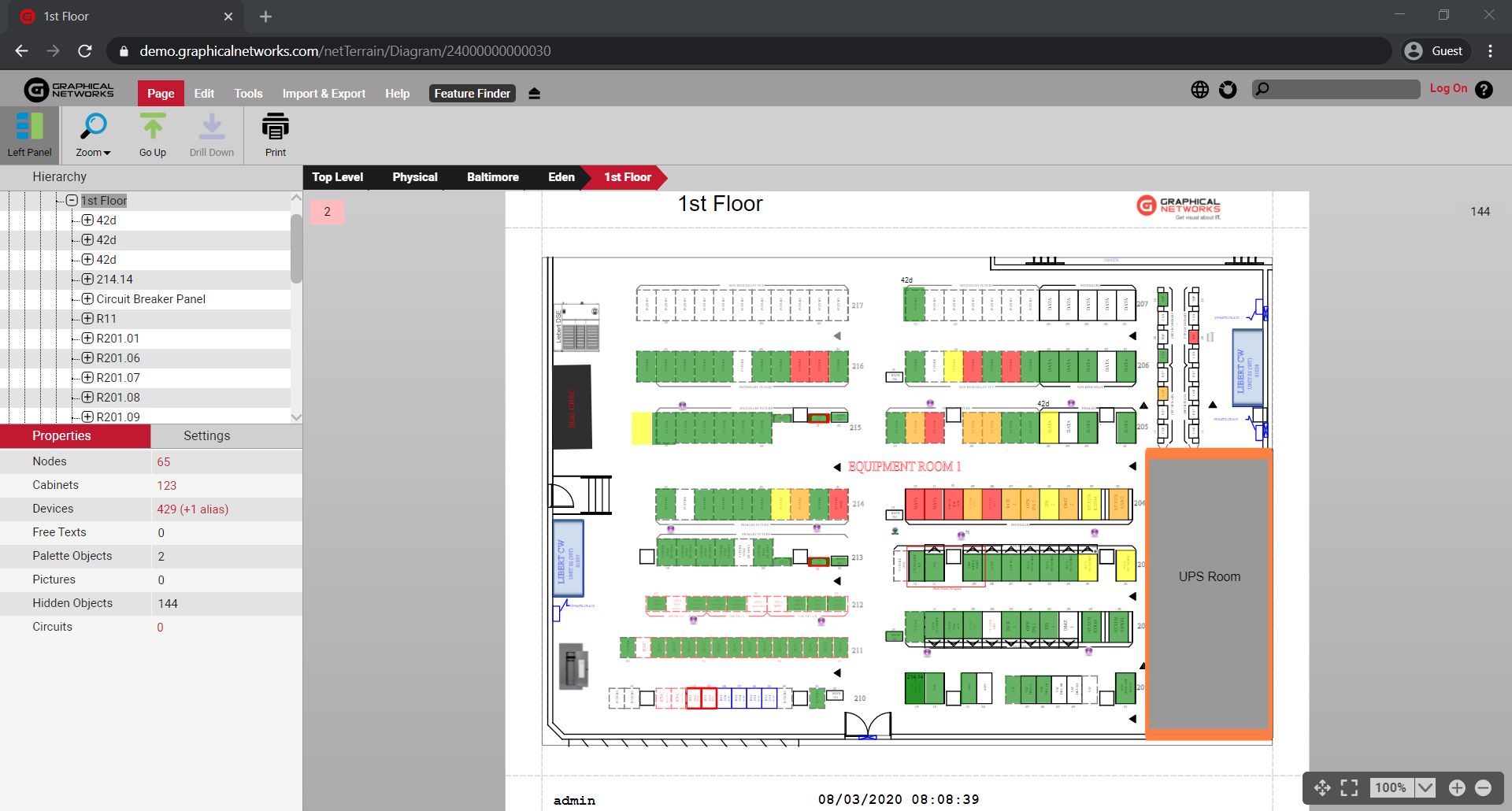
If one of your organization’s goals and projects is to implement a Data Center Infrastructure Management (DCIM) solution, then keep reading.
One of the questions I always ask during my initial meeting with prospective customers for our software netTerrain DCIM is: “are you interested in an on-premise solution or in our DCIM SaaS solution?”
I ask this because netTerrain DCIM is offered as an SaaS or on-premise solution and some customers need on-premise for specific reasons, others elect to go with Saas (aka Cloud). Note that not all DCIM vendors offer SaaS, so if you think you need it, find out upfront if it’s an option.
What’s the difference between on-premise and SaaS solutions?
SaaS:
“Software as a Service,” is a software licensing and delivery model in which software is licensed based on a monthly or yearly subscription, which is centrally hosted and maintained usually through a third party, like AWS or Azure.
On-Premise:
On-premise is software that is installed and runs on computers on the premises of an organization using the software, meaning the software is contained inside the organizations network.
Why DCIM SaaS?
Are you leaning toward DCIM SaaS? Here’s why it may be a good fit for your organization:
Deployment:
SaaS allows you to deploy faster — that’s actually one of the biggest advantages in going with SaaS DCIM over on-premise.
Cost:
Cost-savings are another key advantage. While an on-premise solution includes monthly overhead expenses such as provisioning and installing server(s), database server, monitoring, backups, disaster recovery, updating and configuring the required hardware & software, DCIM SaaS does not. An SaaS solution will take care of all these infrastructure costs, maintaining the infrastructure, and ensure high availability and disaster recovery.
 Rack View in netTerrain DCIM, available as a SaaS or on-premise solution
Rack View in netTerrain DCIM, available as a SaaS or on-premise solution
Questions to Ask DCIM SaaS Vendors
So, you think you want to proceed with DCIM Saas? Well, before you go all plaid on us and go Mach 1, make sure to ask your DCIM or any software vendor really, good questions to ask, to determine which solution is better for you, include:
“What features, if any, are not available if I choose SaaS instead of your on-premise version?”
There are often differences between SaaS and on-premise solutions. For instance, with netTerrain DCIM, the on-premise version gives you unlimited read-only viewers, whereas with netTerrain SaaS a user is a user (regardless if the person is an Admin/Editor user or a read-only viewer).
“What are your security application login mechanisms? Can you connect via Microsoft Active Directory (AD) or Azure AD for single sign-on access? “
This will make it a whole lot easier for your Network Admin to enable automated onboarding and offboarding of accounts.
“Are there any additional costs when choosing SaaS? Items like additional modules or licenses?”
You want to know ahead of time what the total cost will be — before you choose your solution, be sure to scout out any hidden costs that you may regret later.
“Who is your hosting provider?”
This is important to ask to see the safeguards the provider has for security. netTerrain uses Amazon AWS for its hosting provider, which adheres to many security compliances, such as ISO/IEC 27001, Federal Information Security Management Act (FISMA), and others.
“What is your service availability?”
Ask your vendor to provide service level/availability in their terms and conditions. It should be at the minimum 99%.
In sum: by giving you options for both on-premise and SaaS, DCIM vendors can offer you the flexibility for your organization to choose the best solution for your needs. As not all DCIM vendors offer SaaS as an option, if you’re interested in DCIM SaaS, first find out if a vendor offers it! If you’d like a 14-day 100% free trial of netTerrain DCIM as your SaaS solution, click here to try it now.